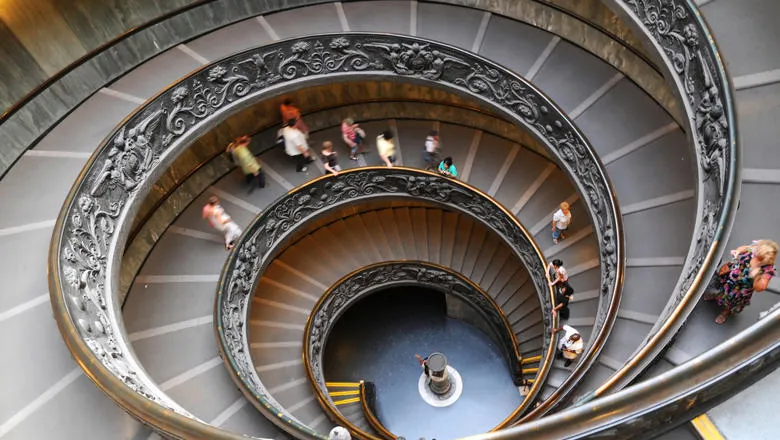The pandemic offers museums a once-in-a-generation opportunity to envisage new ways to support their staff, engage their audiences and operate in the service of society. In planning for reopening, museums should reflect on the new “normality” they wish to create, not only in post-lockdown (but still pandemic) times but also in a post-pandemic future. Critical questions need to be answered.
Dr Serena Iervolino
21 July 2020
Don't simply reopen but dare to change museums
Dr Serena Iervolino
As museums rewind their activities and reopen their doors, I urge them to prioritise their social responsibilities and explore ways to contribute to the wellbeing of their communities

Having been closed to the public since March due to the pandemic, museums and galleries in England welcomed the government’s announcement that they would be allowed to reopen to visitors from Saturday 4th July. After months of exceptional loss of income from a lockdown that threatened the very existence of many institutions, the sector could begin to see the light at the end of the tunnel, in theory at least.
Research on the impact of the pandemic on museums indicate that its economic repercussions have been extraordinary, with lost revenues ranging from 10,000 to 600,000 euros per week. Private museums that rely on earned revenues have been hit the hardest by Covid-19; some risk permanent closure, according to UNESCO and ICOM. Whilst museums both in the UK and internationally have terminated contracts with freelance and part-time staff, primarily museum educators, the UK government’s Coronavirus Job Retention Scheme has protected the jobs of many who would have been laid off otherwise.
In this bleak scenario, the permission to reopen represents a necessary but not sufficient condition for museums to ensure their survival and establish a new “normality” for the sector. Yet, in a country such as the UK that has registered the highest official death toll in Europe and the third highest in the world, the speed at which the lockdown restrictions have been lifted - dictated by political and financial imperatives - is questionable.
Whilst proclaiming their desire to reopen their doors and contribute to supporting the recovery of the economy, UK’s museum sector bodies have also emphasized that the government’s permission to do so does not resolve the financial and operational challenges they now face. Diminished earned revenues from reduced cultural tourism, for instance, are foreseeably here to stay.
The government’s £1.57 billion rescue package for museums and galleries and other arts, cultural and heritage institutions – announced on Sunday 5th July – is a much welcome initiative which will help many institutions stay afloat. Yet, each institution will have to decide when it is financially viable to reopen and, crucially, safe to do so.
Museums must confront the primary operational and ethical challenge of how to safeguard the health of staff and visitors. Ultimately, museums were not designed for social distancing and need to adapt their spaces, practices and operations. Ensuring the safety of those 'frontline' staff members whose job requires interactions with visitors, and for whom smart working is not an option, is of critical importance. Some come from communities disproportionately affected by Covid-19 and that remain most at risk.
The distinctive challenges faced by these and other vulnerable staff members require careful considerations, as noted by Museum Detox, the network for museum and gallery workers who identify as of colour.
This, however, offers museums an opportunity to begin addressing issues of inequality and discrimination embedded in their institutional structures and working practices. The coincidental intersection with the Black Lives Matter movement should waken awareness and underscore the urgency for museums to move beyond empty gestures of solidarity toward tangible systemic change.
For instance, to what extent should museums implement a “blended approach” combining face-to-face and online to simultaneously serve audiences who need, or choose, to continue shielding and those who are keen to visit in person? Which adjustments do they need to make to accommodate the coronavirus-induced health anxiety and agoraphobia many of us are experiencing? How can they help their communities overcome the negative effects of the pandemic and quarantine on mental health and wellbeing?
As the appetite for other indoor attractions is currently limited, it will take some time before even regular visitors will flock back to museums. This allow museums to slow their activities, focus on key priorities and take the time to reimagine different futures.
Despite the undeniable challenges, the months ahead could offer change, creativity and innovation for those museums that consciously choose not to return to business as usual but rather seize new opportunities. The challenges the sector has confronted during lockdown have already triggered ingenuity. Many museums have demonstrated to be resilient institutions that, when confronted with unprecedented crisis, can transform their operations and activities, develop new initiatives, shift resources and expertise, harness the possibilities offered by digital technologies and experiment with new ways of engaging their audiences.
We have also witnessed innovative cross-sector initiatives such as #MuseumFromHome, part of the BBC Arts Culture in Quarantine programme. Some of these digital initiatives have facilitated an unprecedented level of access for previously excluded communities, including differently-abled people. Yet, digital technologies are not a panacea for all issues of museum accessibility. In fact, they can constitute potential barriers for some people, as UNESCO contends: an aspect that requires careful consideration.
As museums rewind their activities and reopen their doors, I urge them to prioritise their social responsibilities and explore ways to contribute to the wellbeing of their communities. Each institution should develop appropriate, locally relevant and sustainable strategies responsive to the current needs of their communities.
Dr Serena Iervolino
Significantly, all museums share the potential to help us make sense of what it means to be human in times of uncertainty and profound change, and remind us that this, too, shall pass – if we use our resources wisely, act in solidarity and take care of our most vulnerable.
I hope that the spirit of innovation and change sparked by the pandemic will be retained in the months and years to come. If museums embrace uncertainty as a force for resilience, innovation and courageous change, they may not merely survive but also reimagine themselves – and in so doing, even better serve their societies.

